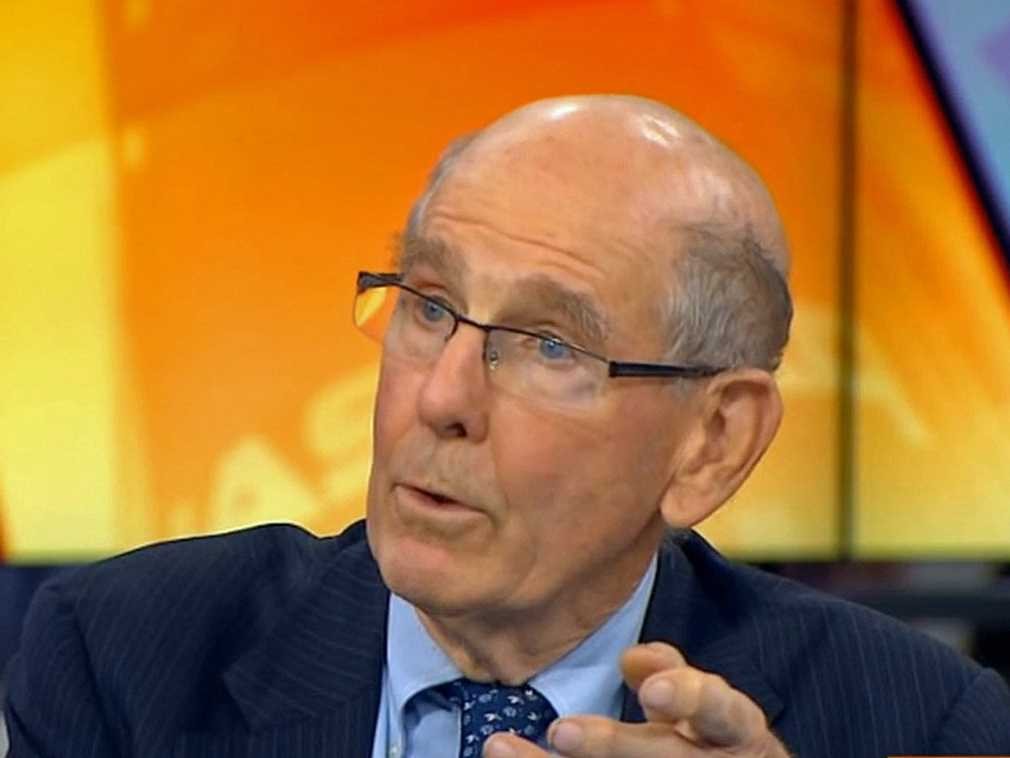Gary Shilling Why You Should Sell Stocks And Buy Treasurys
Post on: 30 Апрель, 2015 No Comment

Gary Shilling is president of A. Gary Shilling & Co. author of The Age of Deleveraging: Investment Strategies for a Decade of Slow Growth and Deflation and a Forbes columnist. I recently sat down with Shilling to discuss why he is long treasuries, wary of the stock market and how bee-keeping helps his investments. Video and a transcript of our conversation follows.
Steve Forbes : Gary, good to have you back. Your record has been phenomenal. I think you’re about the only person I know who has consistently, for years, said, “Be in treasuries and you’ll do better than the market.” And indeed that has been the case.
Gary Shilling: Thirty-two years now, Steve. Since 1981.
Forbes: Well, we’ll ask you in a minute about when you think that string may play out. But you make a couple of references. One is the age of a deleveraging and the other is the great disconnect you see right now. First, give us quickly the age of deleveraging and what that means for economies and for equity markets.
Shilling: We are in a age of deleveraging, in the fact that all the financial leverage that was built up in the financial sector and the global basis and U.S. consumers is now being reversed. And the leveraging up is when people went from 20% down on a mortgage to 5% to 0%.
The leveraging is up when the Bear Stearns and Lehmans of the world — before they carried them out — went from ten times leverage to 20 times leverage. Now is being reversed on a global basis. What it means is we’re about five years into this process, and I think we private have about another five years to run. And that would make the usual decade of deleveraging after a major financial crisis.
During that time you can expect a continuation of slow growth here and abroad. We’re looking for about 2% real GDP growth in this country and probably not much more in any other country in the world. As far as the grand disconnect, as I call it, this is the difference between the economies of the world, which are limping along at best, and Europe is in recession, U.K.’s in recession, Japan’s in recession, China has had a big slowdown in growth. The U.S. economy I think is limping along.
The big difference between that and investor enthusiasm over central bank ease, investors are saying, “I couldn’t care less about the economies on the ground, as long as the central banks are shoving money out the door. Don’t fight the Fed,” is the sort of thing. So they are out there buying stocks and all kinds of low-grade securities as a result.
Forbes: Well, let’s first talk about the age of deleveraging. What are the precedents? What periods have we gone through in the past of deleveraging? And what are the metrics you use to decide we’re over-leveraged or that this debt is sustainable, so to speak?
Shilling: Well, of course we went through immense deleveraging in the 1930′s after huge leveraging up in the 1920′s. The 1920s were an era of big financial leverage. It was the first time that consumers were borrowing heavily. And that’s because the new technologies in the ’20s, electrification of homes and factories, brought with it all the appliances.
And, of course, mass-produced automobiles came in in the ’20s. So that’s when GM got into the consumer finance business, to finance cars, and GE to finance appliances. You had this huge leveraging up in the consumer area and the financial area, stock market booming. Then the 1930′s was a fairly dramatic period of deleveraging.
How do you measure when you get back to normal? Well, we look at the cumulative outside net financing of the major sectors of the U.S. economy: the non-financial corporate sector, the financial sector, the state and local governments, the federal government sector and consumer sectors. When you look at those cumulative net outside financing, in relation to GDP, you see that they’re fairly flat over time.

But then, starting in the ’70s, in the case of financial sector, and in the early ’80s, for consumers, they had this huge leveraging up. And so you say, “Well, they’re coming down. How long will it take them to get back to norm?” Now if you actually just trace out the lines, it’ll take more than five years. But I’m saying another five years because that, in combination with the five we already have, is about the normal decade after a major financial crisis, to get the leverage wrung out of the system.
Forbes: Talking about the consumer, from your studies of history, what’s a proper level of indebtedness overall?
Shilling: Well, consumer debt is a very interesting pattern. It started very low after World War II. Everybody was still in a recession mode. There wasn’t much you could buy that you could finance then. You couldn’t buy cars and washing machines in the ’30s. People couldn’t afford them in the war years.
But basically consumer borrowing, and that’s all borrowing, mortgage borrowing, credit cards, auto loans and now student loans have become big. If you look at that, in relation to after-tax income, the norm was about 65%. It ran up to 131%. We’re now back to still over about 109%. We’re still on the high side.
I’m a great believer in reversion to norm. I think that we’re going to go back to those debt levels. At the same time, the flip side of that is saving. How much do people save out of their ongoing incomes? And that, back in the early ’80s, was 12%. It got down to less than 1%. I think it’s probably going to go back to double digits because, among things, the post-war babies have not saved. They’ve been lousy savers. And they need to save. They’re facing retirement in the teeth. They don’t have the tuition payments for their kids, by and large. And a lot of them are in their peak career earnings years, in their 50′s and so on, where they can save.
So there are a number of factors. People no longer have the home equity to pull out of their houses. They don’t trust their stock portfolios. I think there are a lot of reasons that people are going to not only work down debt but increase their saving.
Forbes: Can you both deliver and grow at the same time?














